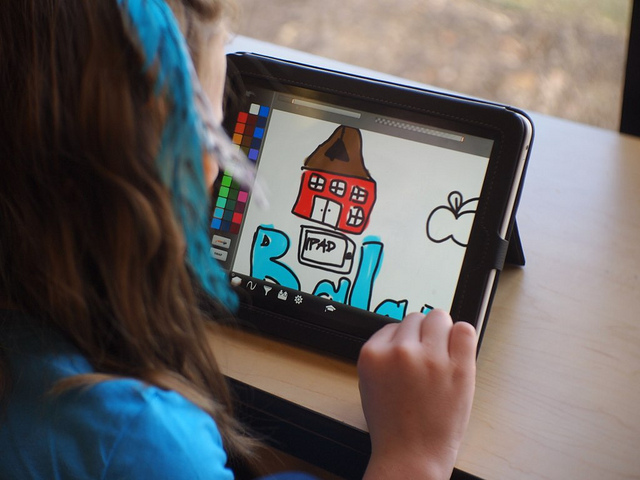When Embedding Devices Into Your Curriculum, Focus On Active Screen Time

The use of devices, such as computers and mobiles in the classroom can have a wealth of positive effects on student retention and engagement. However, there is a sharp difference between the possibilities of active screen time as opposed to passive screen time.
In short, students use more of their brains and are more apt to focus and retain information when given active tasks to do on screens rather than just sitting back and watching a YouTube video.
Children focus more acutely when their screen time is linked to action – whether it’s playing a game or encouraging a physical response outside of the online realm. Such stimulation and calls to action spur engagement and aid retention. If they are tasked with just watching video after video, they’re going to zone out.
To maximize the power of screen time when it comes to technology in the classroom, you must limit the opportunities for them to zone out of focus and spur them into engaging learning as active users.
Look For Both Student Engagement And Student Enjoyment
Didactic one-way teaching simply doesn’t translate well to the current youth populace and their learning habits. You have to engage students at their level and get them to enjoy the process of learning!
This isn’t just a face-to-face thing, either. If you rely on passive screen time activities such as videos and online reading, it functions as the technological equivalent of a long, boring lecture. Students want to be spurred into action.
Furthermore, students want to enjoy being spurred into action. Therefore, the active learning mechanisms you use on devices such as computers and mobiles must be enjoyable enough for them to want to engage.
These active learning programs should teach students a new skill or tool while doing it in such a way that they enjoy the process and want to do it again. You want them to participate in their own learning, rather than watch it passively. This will get their brain firing in such a way that they’ll retain information better, problem-solve with more intuition, and find their own intrinsic motivations to learn and keep learning.
Recalibrating The Idea Of Learning And Keeping It In An Active Context
While videos and passive screen time have their place in learning, it’s active screen time and learning activities that will really stick with students. After all, learning itself is not merely the passive acquisition of knowledge.
Learning is the active assimilation of knowledge. Whether it’s online games, coding, building a communal relationship with other students with group online tasks or what have you, pushing active screen time as the primary goal of using technology in the classroom will get your students to become active learners.
Concluding Thoughts
At its best, active screen time pushes students to take what they’ve learned and apply it thoughtfully. When they do this, they are more willing to learn new concepts that correlate and put what they’ve learned to use in a real-world context.
This aids retention, builds student engagement, and primes students for real-life problem solving where they’re going to have to actively learn and assimilate knowledge on the fly.






